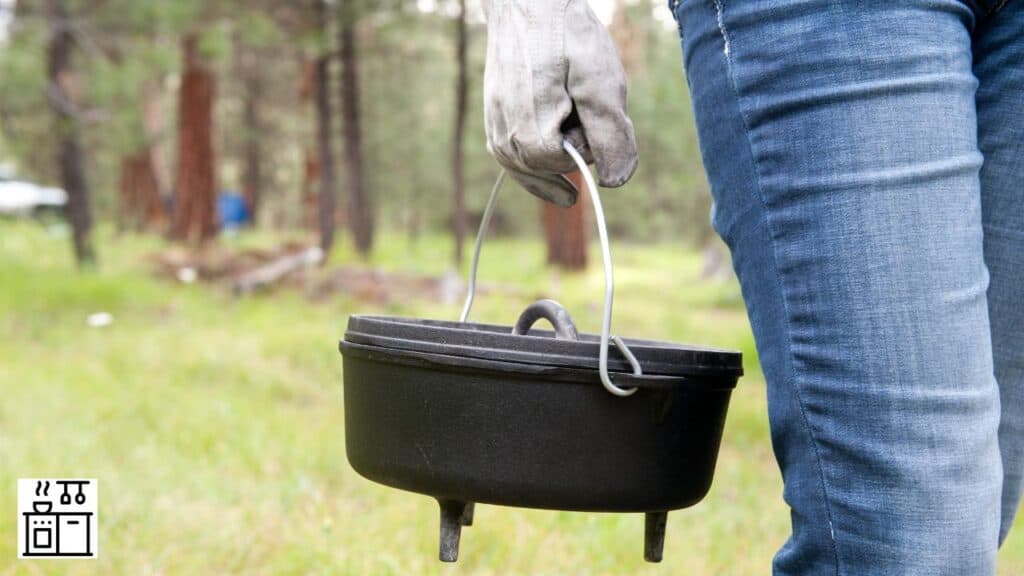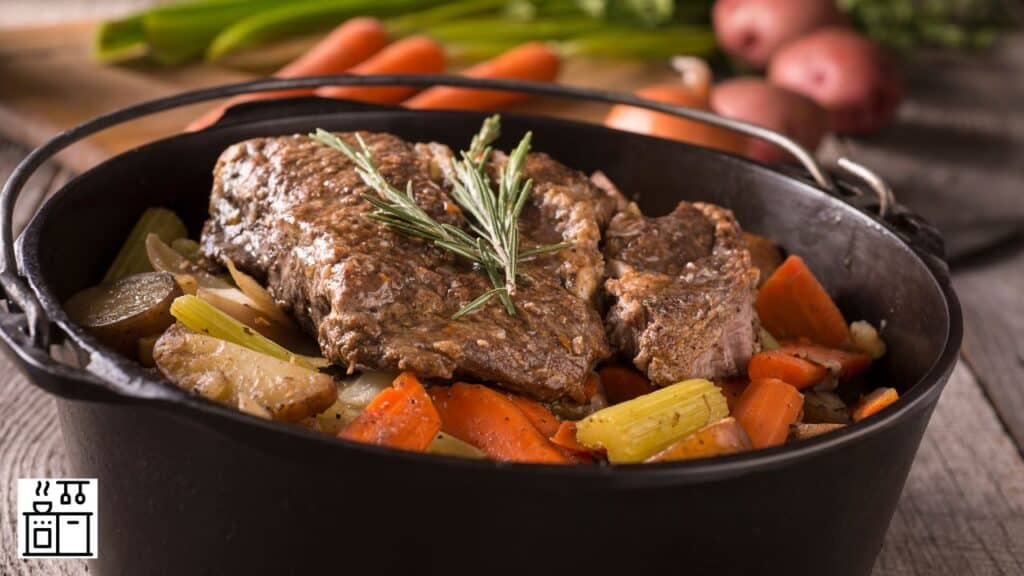Pots are essential kitchen utensils with a deep base, high sides, and loop handles on either side.
Their characteristic shape allows them to hold a large quantity of ingredients. Pots can come in all sizes and are used for multiple purposes.
They may also be constructed using different materials like copper, aluminum, stainless steel, terracotta, and ceramic.
We can differentiate pots based on the material used for construction.
Another way is to divide them according to use. Each pot is suitable for a specific need.
Let’s look at how to use some of the most common types of pots.
Sauce Pot
Sauce pots are deep and wide vessels with high walls and a base with a large diameter. These pots usually have loop handles on either side.
These features make it easy to cook liquid-based dishes in sauce pots. But you can also use them to make various other dishes.
Sauce pots are good for boiling pasta and cooking stews and soups. You can also use them to steam vegetables and rice.
The high sides allow the ingredients to cook without spilling. These pots are also good for reducing sauces.
Due to their shape, they can hold more volume than saucepans and can be used to cook sauces and liquids in larger quantities.
Stock Pot
Stock pots are larger than sauce pots and easily identifiable by their size and shape. They have very high walls and a wide base.
However, the base diameter is comparable to other pots, and these pots appear taller than they are wide.
The unique shape of a stock pot makes it easy to heat large quantities of liquids. So you can use them to simmer and boil ingredients.
The lid prevents liquids from evaporating, so the liquid doesn’t reduce too much.
This makes it ideal for cooking stocks, soups, and similar dishes using large amounts of liquids.
Braziers
Braziers are shallow pots with a wide cooking surface. They can hold a good amount of liquid but have a smaller capacity than stock pots and sauce pots.
These pots are good for long and slow cooking of meat and vegetables in a liquid base.
Cooking ingredients in a small space allows the liquid to infuse into them and add flavor.
They are usually made of metal and have thick walls, making them oven-safe.
So, you can start cooking in these pots on the stove and transfer to the oven to complete the dish.
Fryer Pot
A fryer pot is a good alternative to a deep fryer. But you can use it for other needs besides deep frying.
It holds enough oil to fry small batches of food. Most fryer pots come with a side hook to hook up a draining basket when needed.
The base is wide to allow even heating of the oil. It will also be thick to prevent overheating.
Apart from using it to cook French fries, chicken fingers, mozzarella sticks, and fish, you can also use the pot to cook sauces and stews.
Pasta Pot
If you make pasta regularly, you will know that you need a deep pot to prevent the liquid from spilling over.
A pasta pot is the right kitchen utensil for this purpose.
This pot usually has three parts: a fitted lid, a main deep pot with high edges, and a strainer that fits inside the main pot.
After adding the pasta to the strainer, place it inside the main pot with the cooking liquid and cook as usual.
When the pasta is done, you can just lift the pot out of the base and add it to the sauce of your choice.
There is no need to drain it into another vessel or wait till it loses all the liquid.
Some pasta pots may come without the perforated basket or strainer. In this case, you will add the pasta directly into the boiling water.
Covering the pot with the lid will speed up the cooking process.
In this case also, the two side handles make it easy to get rid of the excess liquid by straining it into a colander or mesh strainer.
Apart from making pasta, you can use the same pot for cooking rice or steaming vegetables, meat, and seafood.
Dutch Oven

Dutch ovens are thick, heavy pots with a wide base. The base is relatively shallow, but it has thick, curved walls and a tight lid.
Dutch ovens are made of heavy metals like cast iron which make them very heavy. These pots need seasoning to develop their non-stick properties.
However, the benefit is that once they are properly seasoned, you can cook with less oil.
Additionally, the food will come off easily, making it easy to clean. As the name suggests, these pots also provide a closed area for cooking food.
Dutch ovens can cook thick and tough cuts of meat like lamb, beef, pork shoulder, and mutton thoroughly.
You can also use it to roast chicken or make casseroles and stews.
Due to its construction, it acts like a miniature oven in which you can prepare no-knead bread and casserole dishes on the stovetop.
Dutch ovens can be used on the stovetop as well as in the oven.
These pots are made of ferromagnetic cores and hence are induction-friendly too.
French Oven
A French oven is an adaptation of a Dutch oven.
It’s usually considered a high-end version of the traditional Dutch oven because of its unique properties.
The main difference between a French oven and a Dutch oven is the internal pot structure.
The base of a French oven is usually cast iron with an enamel or cast aluminum covering. This makes it heavy.
The enamel coating also creates a beautiful white surface on the inside. It also makes it naturally non-stick and easy to clean.
French ovens usually come in iconic colors, making them a beautiful addition to a kitchen.
Double Boiler
A double boiler is a two-layer pot with a base pot and an insert pot that fits neatly inside the rim of the outer pot.
The lower pot holds water while the upper pot carries the ingredients to be cooked.
The ingredients in the upper pot cook in gentle heat from the boiling water in the base.
This gentle cooking process is used to make sauces and melt chocolate.
The slow but gentle heating technique allows cooks full control over the cooking process.
A double-boiler is also called a Bain Marie.
Clay Pots
Clay pots were traditionally used in different parts of the world to store water and cool it.
These pots are made from mud that is molded by a potter and heat treated to increase strength and resilience.
They can withstand high temperatures and can be used on the stove or even in the oven, in some cases.
The main benefit of using a clay pot is that it cooks in the moisture from the ingredients and porous clay.
You can use clay pots to cook a variety of dishes like sauces, stews, rice dishes, soups, and gravy.
These pots can be used for making fish, meat, vegetables, grains, eggs, and seafood.
The main benefit of using a clay pot is that it produces a unique flavor and helps the food remain moist and soft.
However, these pots will often need seasoning with oil to prevent them from becoming brittle and losing their porosity.

